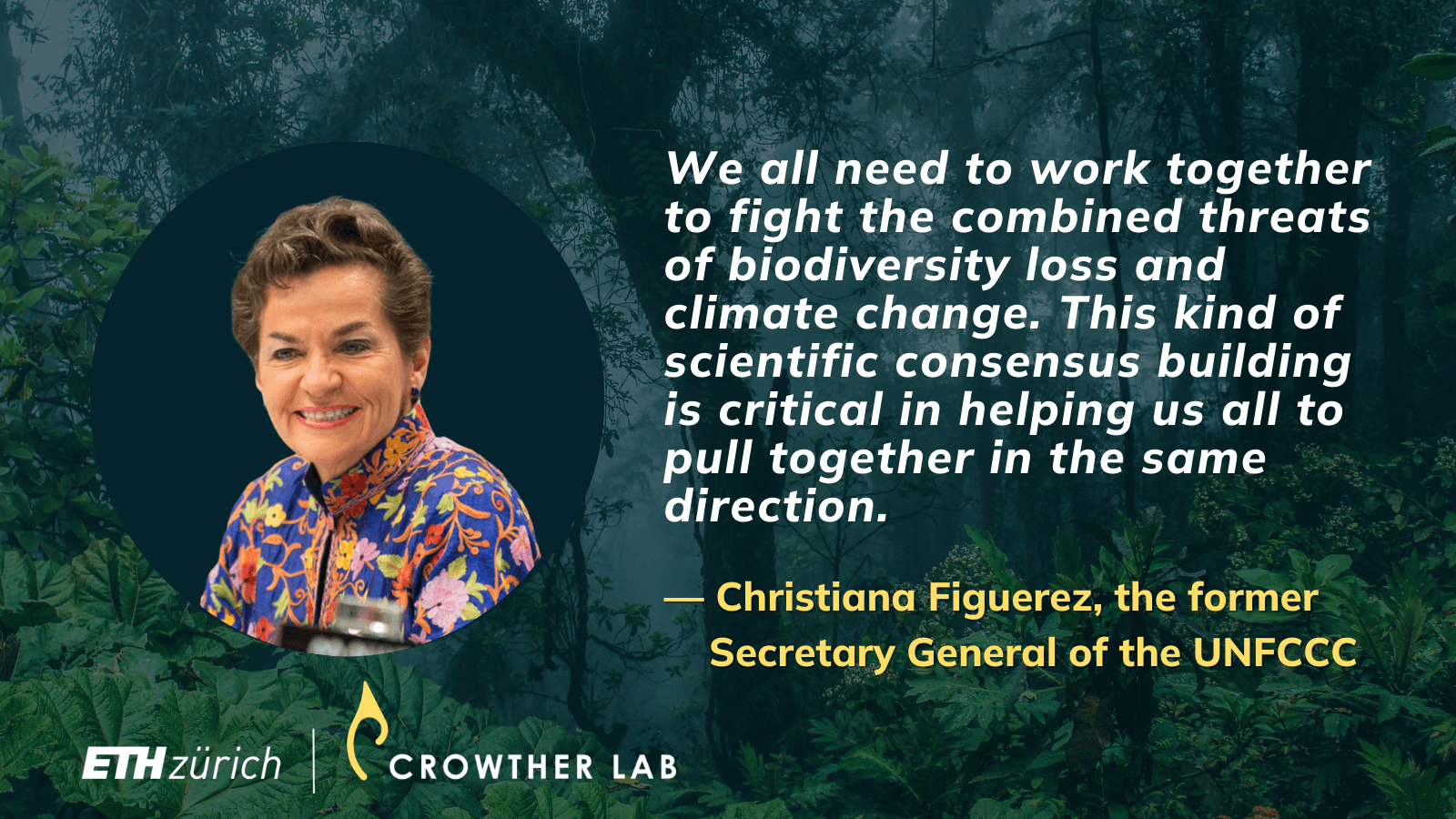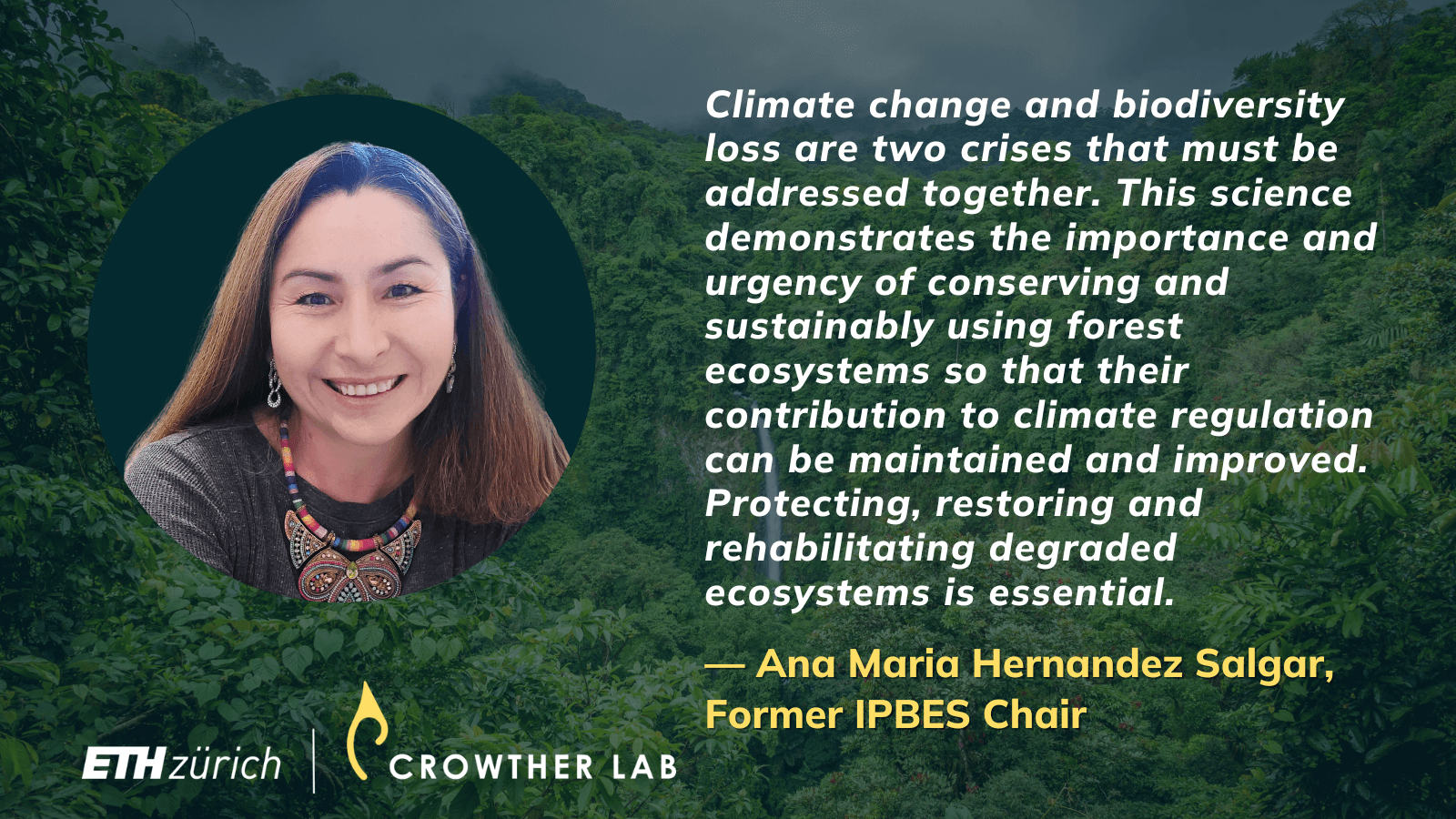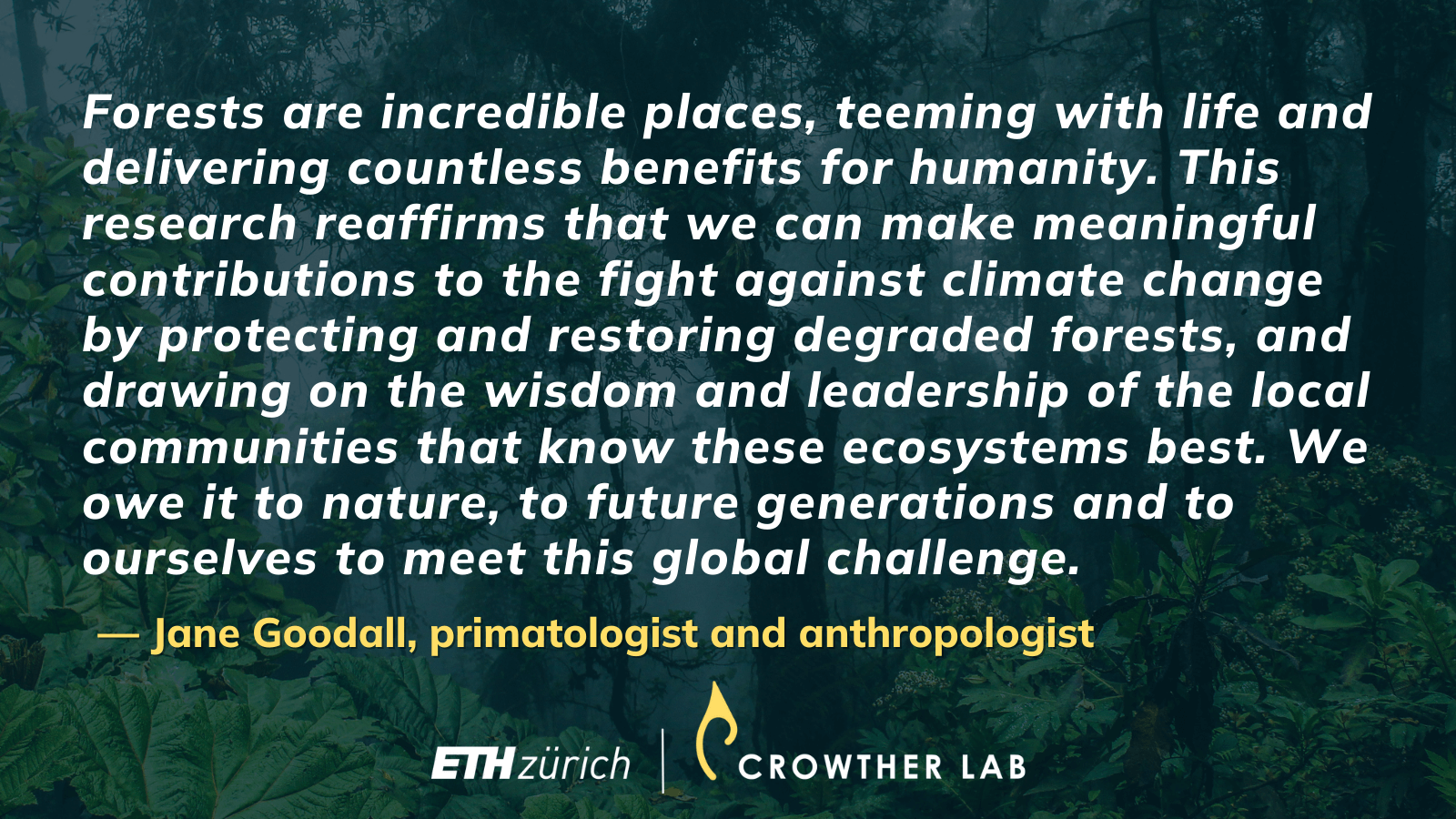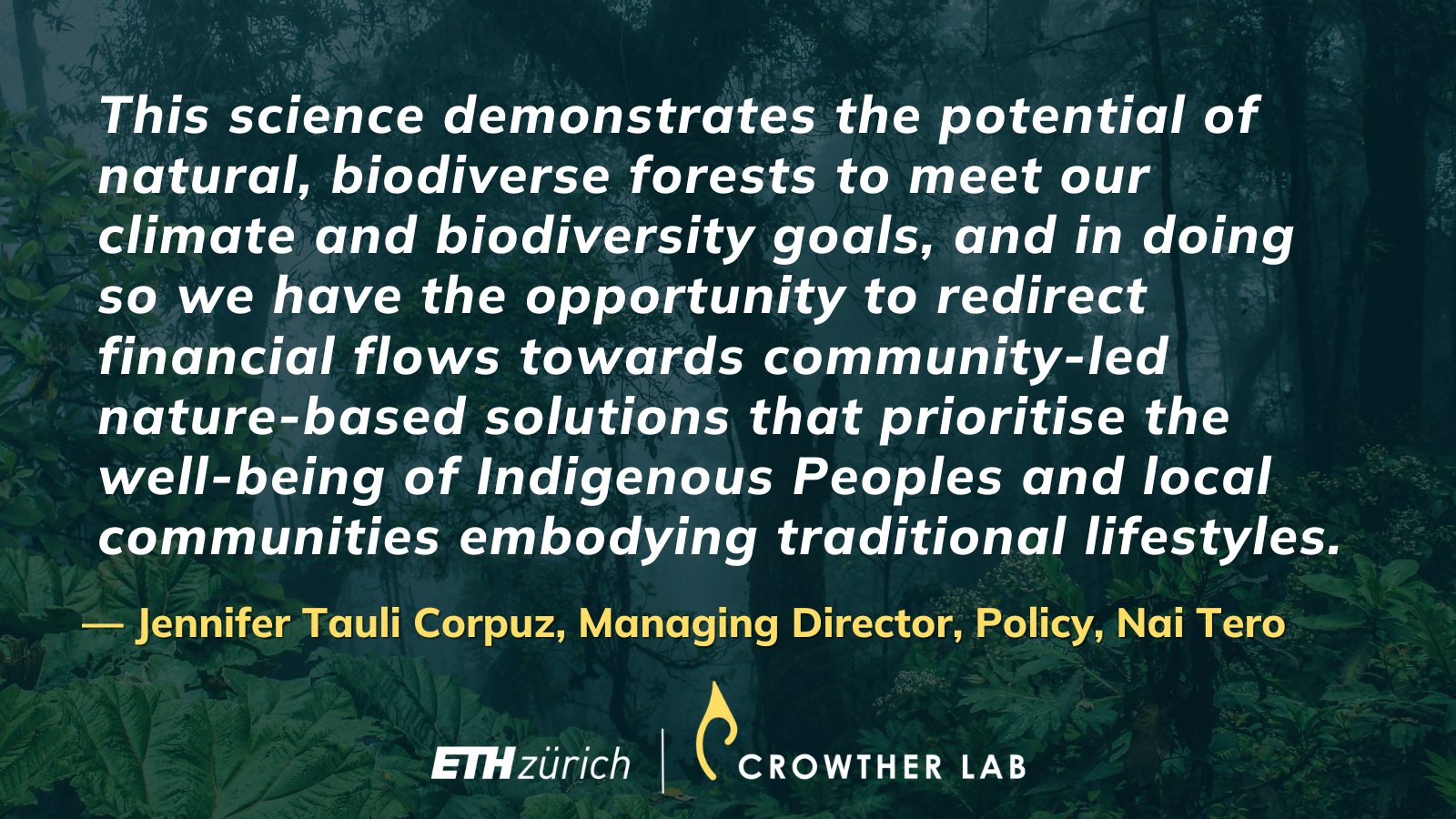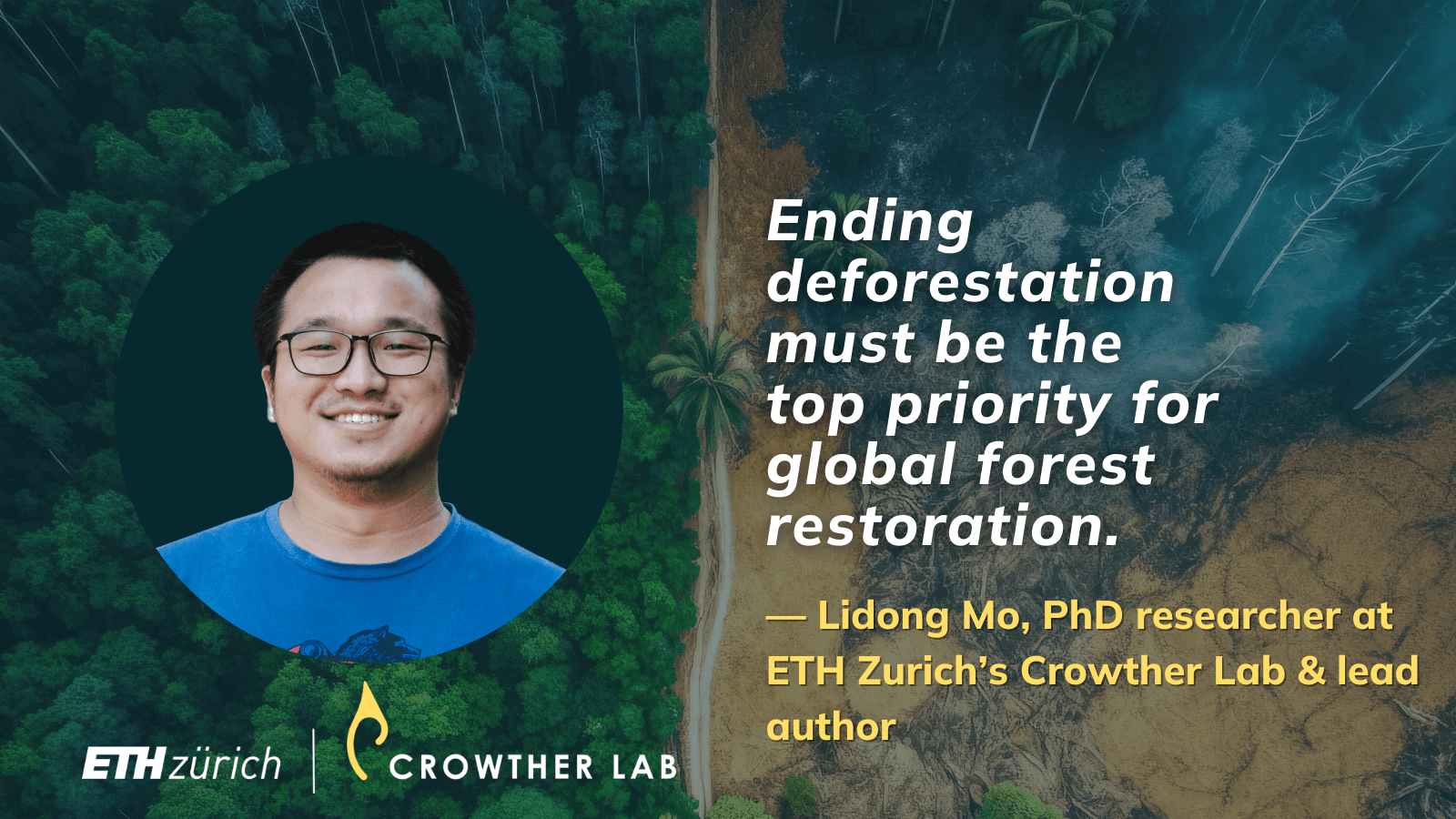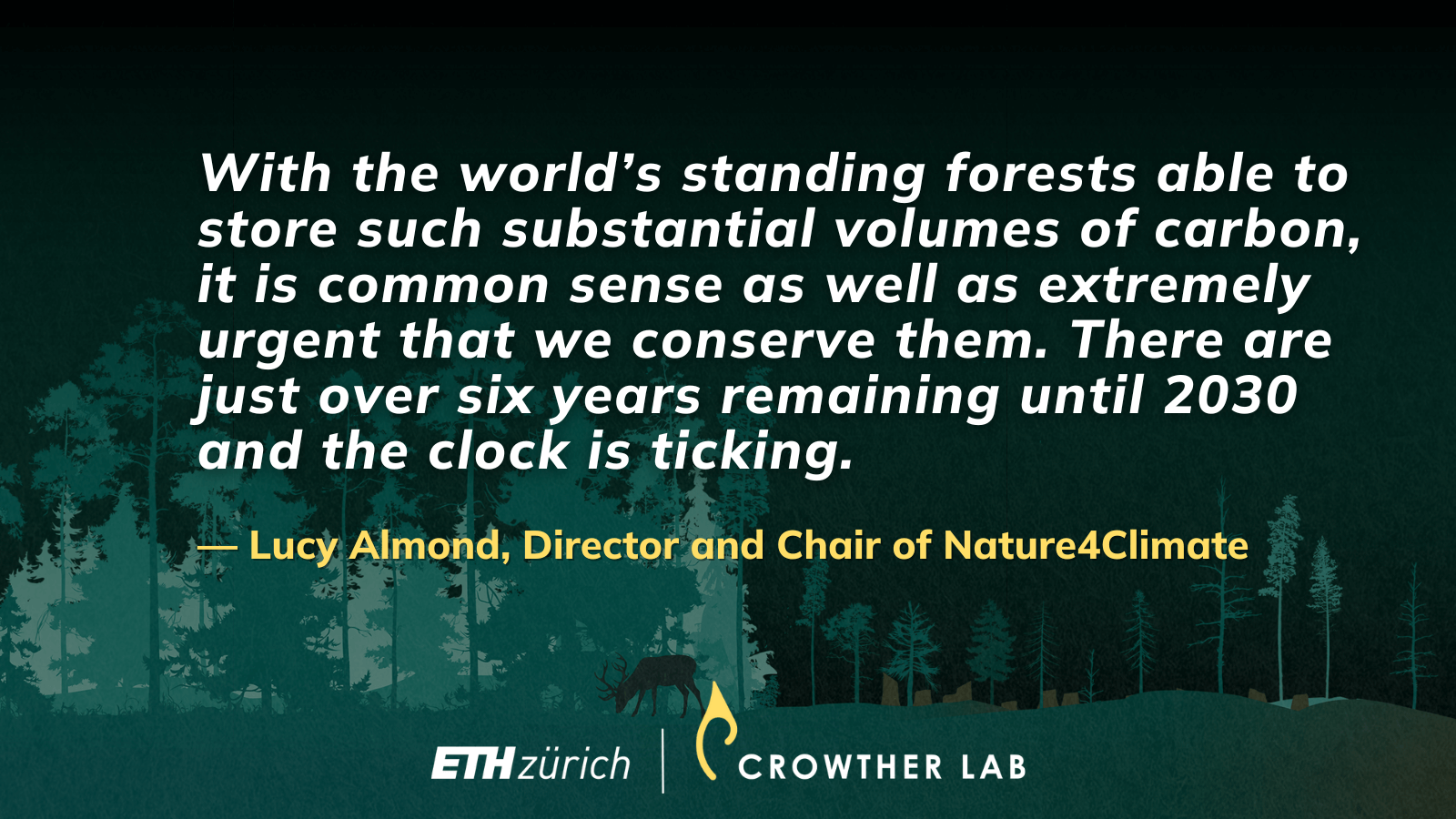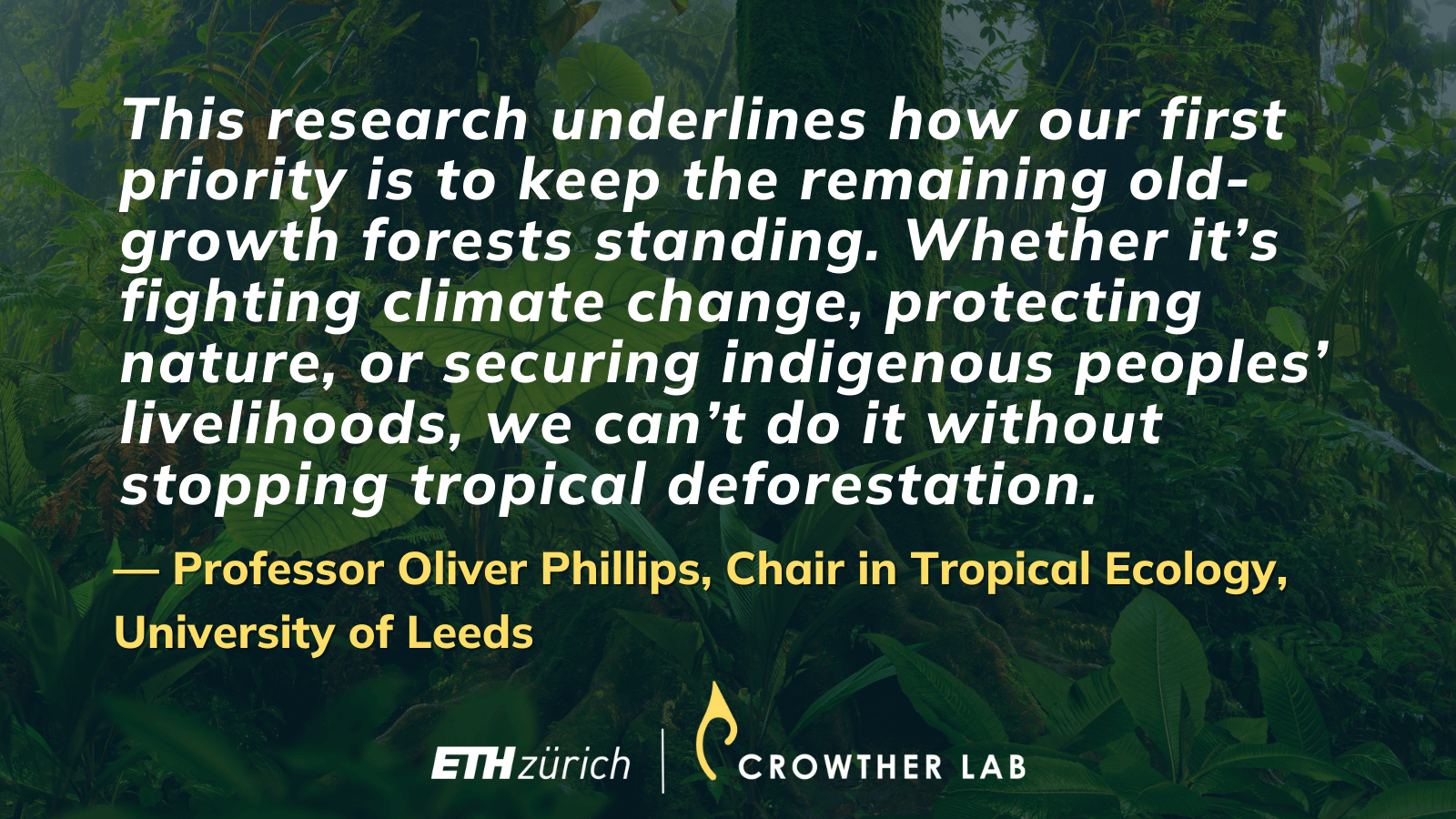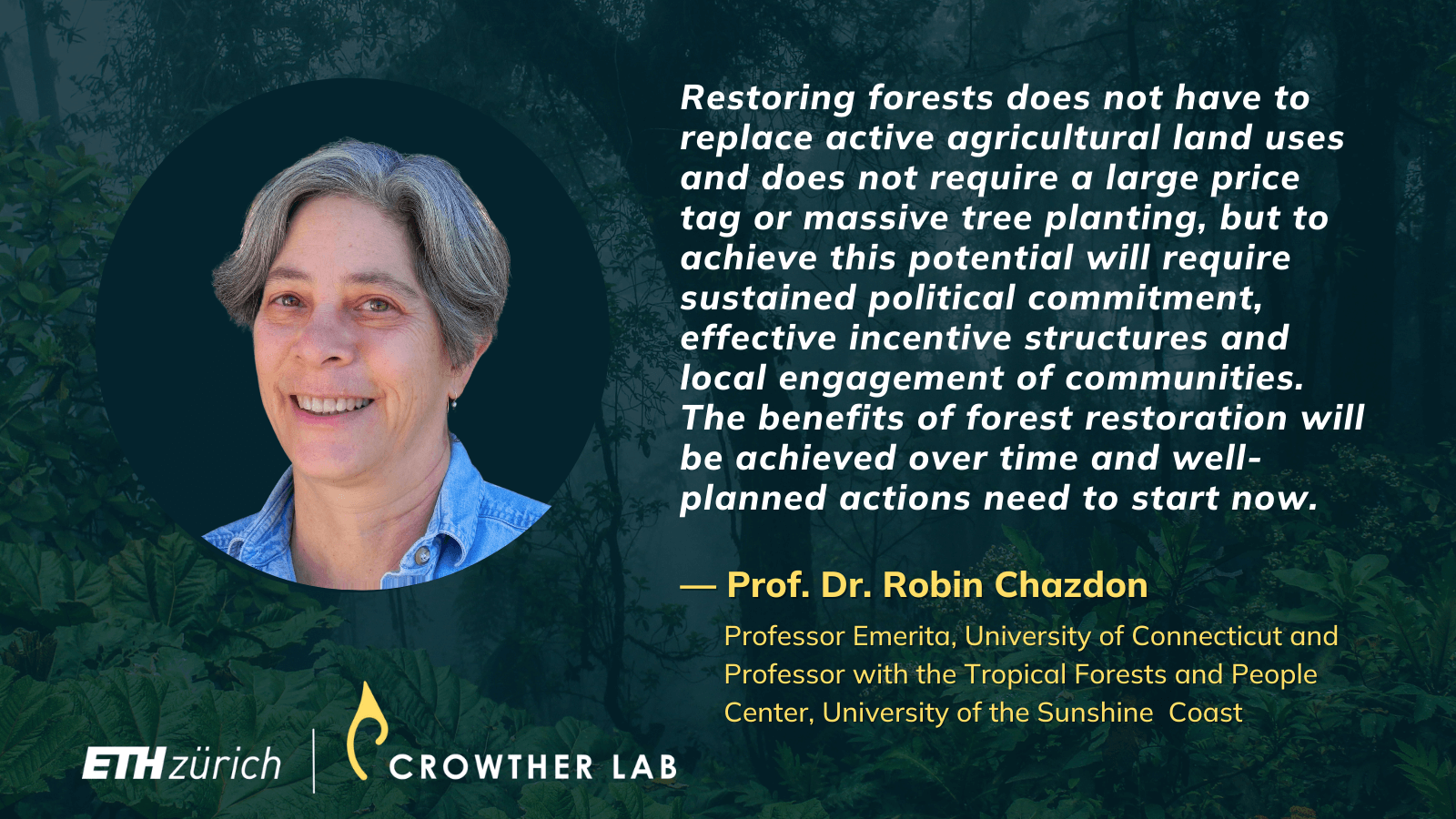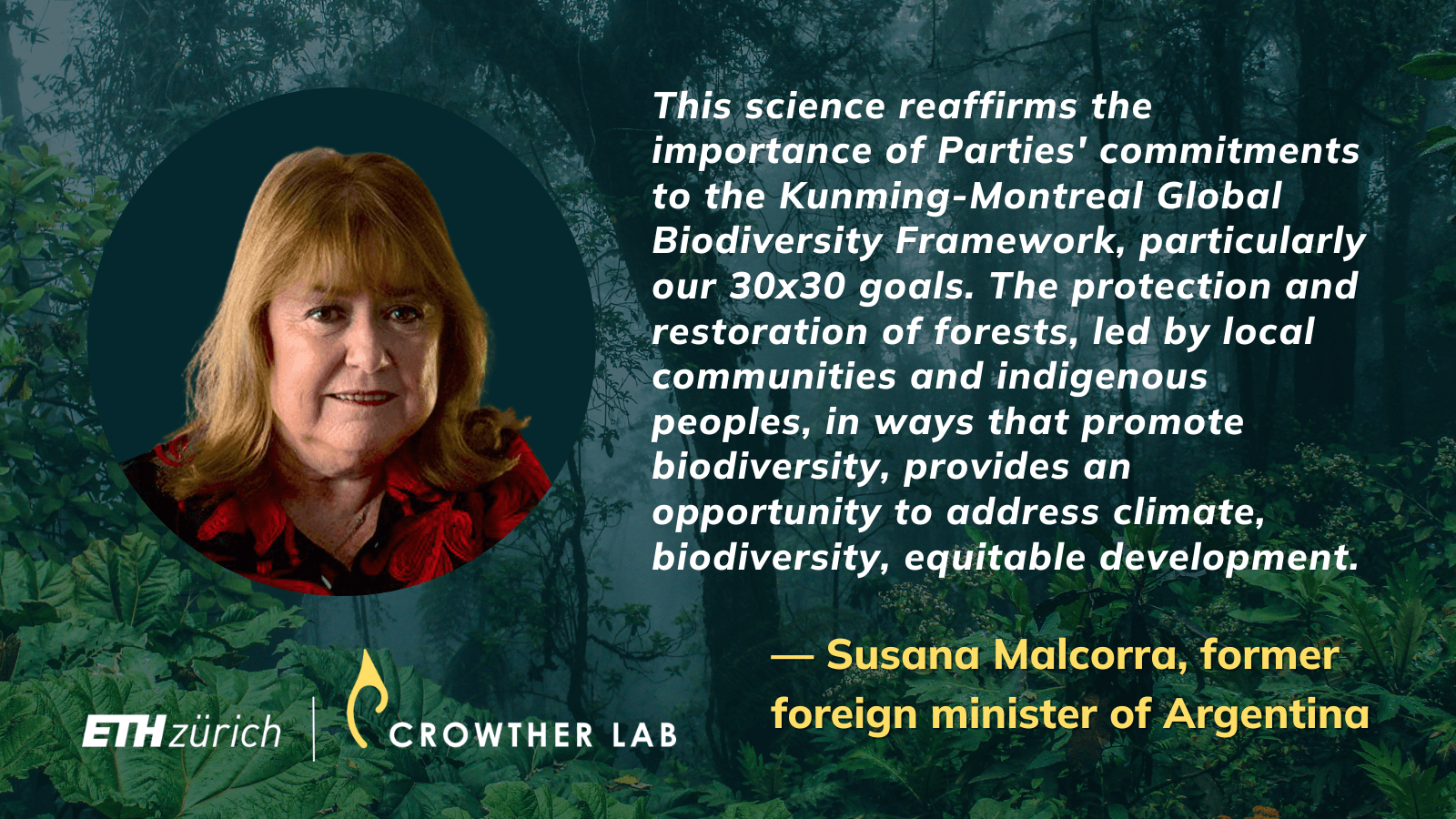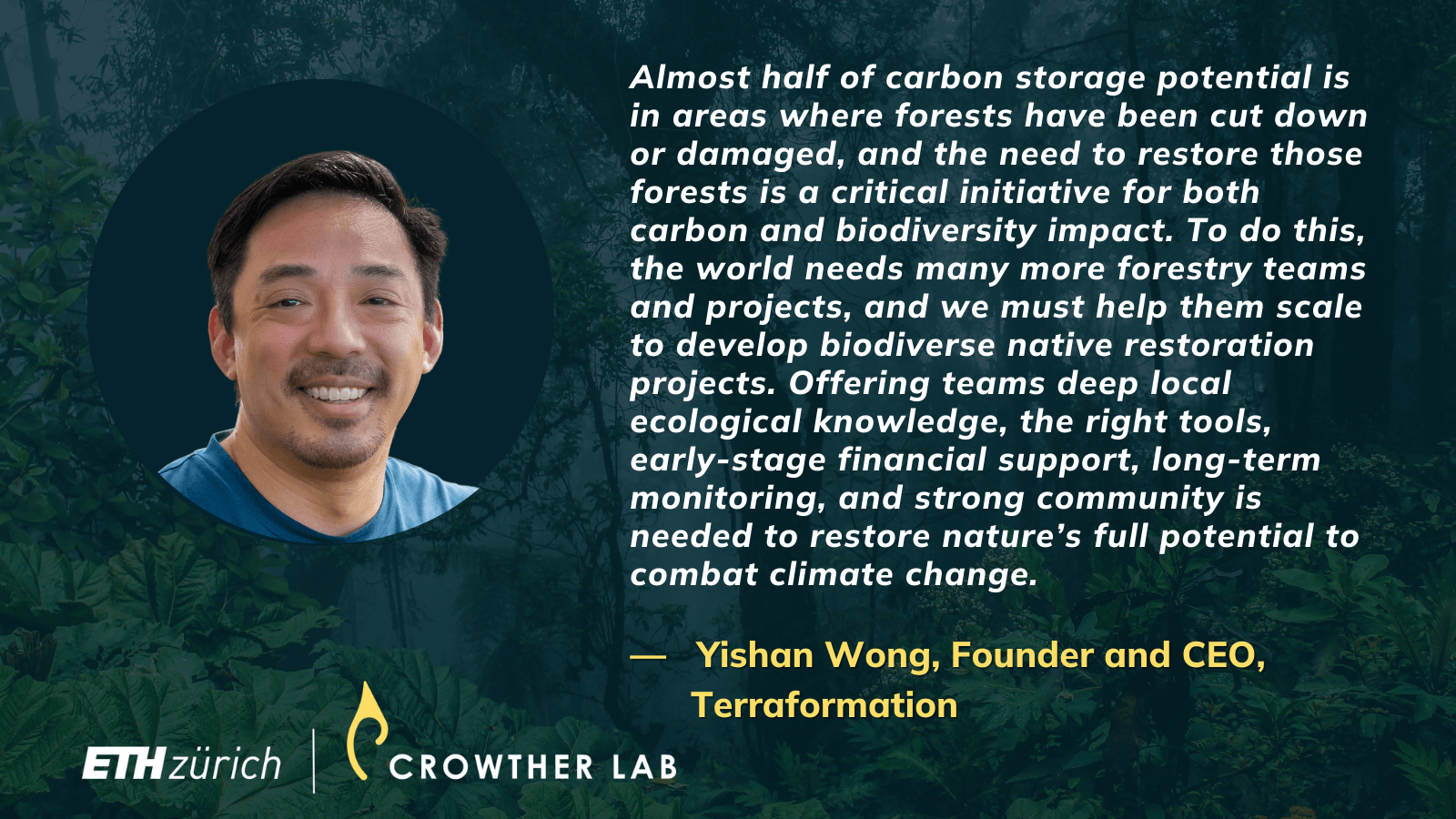The role of forests in fighting climate change has been a highly controversial topic, with considerable debate in the literature. To address this controversy, over 200 leading scientists have joined forces to build the first Integrated Global Forest Assessment (IGFA), published in the journal Nature.
Due to ongoing deforestation, the total amount of carbon stored in forests is ~328 Gt below its natural state. Outside of urban and agricultural areas, the assessment highlights that forests could capture ~226 Gt if they were allowed to recover in regions with low human footprint.
This represents ~30% of our carbon drawdown targets.
The research
Historically, our understanding of global forests has stemmed primarily from satellite observations, with fantastic global coverage, but high uncertainty at the local scale. To improve the robustness of these global predictions, the study combined these satellite estimates with ground-sourced data collected from people in over 1.2 million forest locations across the globe.
The study features not only aboveground plant biomass, but also belowground data on soil, roots, dead wood, and litter. As such, this provided detailed insights into the total carbon storage across the globe. Collectively, these models could provide a comprehensive estimate of carbon storage in the world’s forests at present, but also the potential for additional carbon storage if degraded ecosystems were allowed to recover to their natural state.
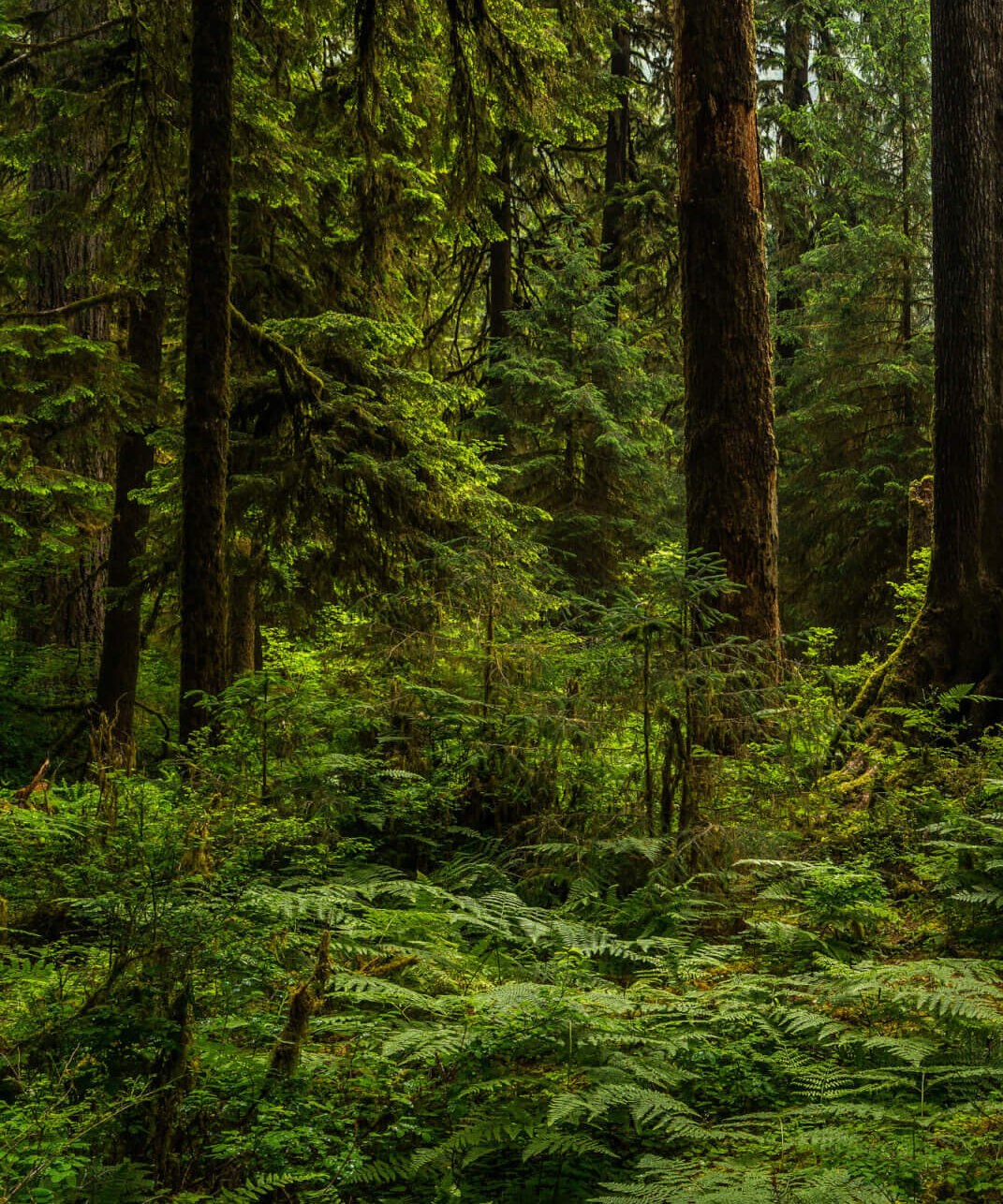
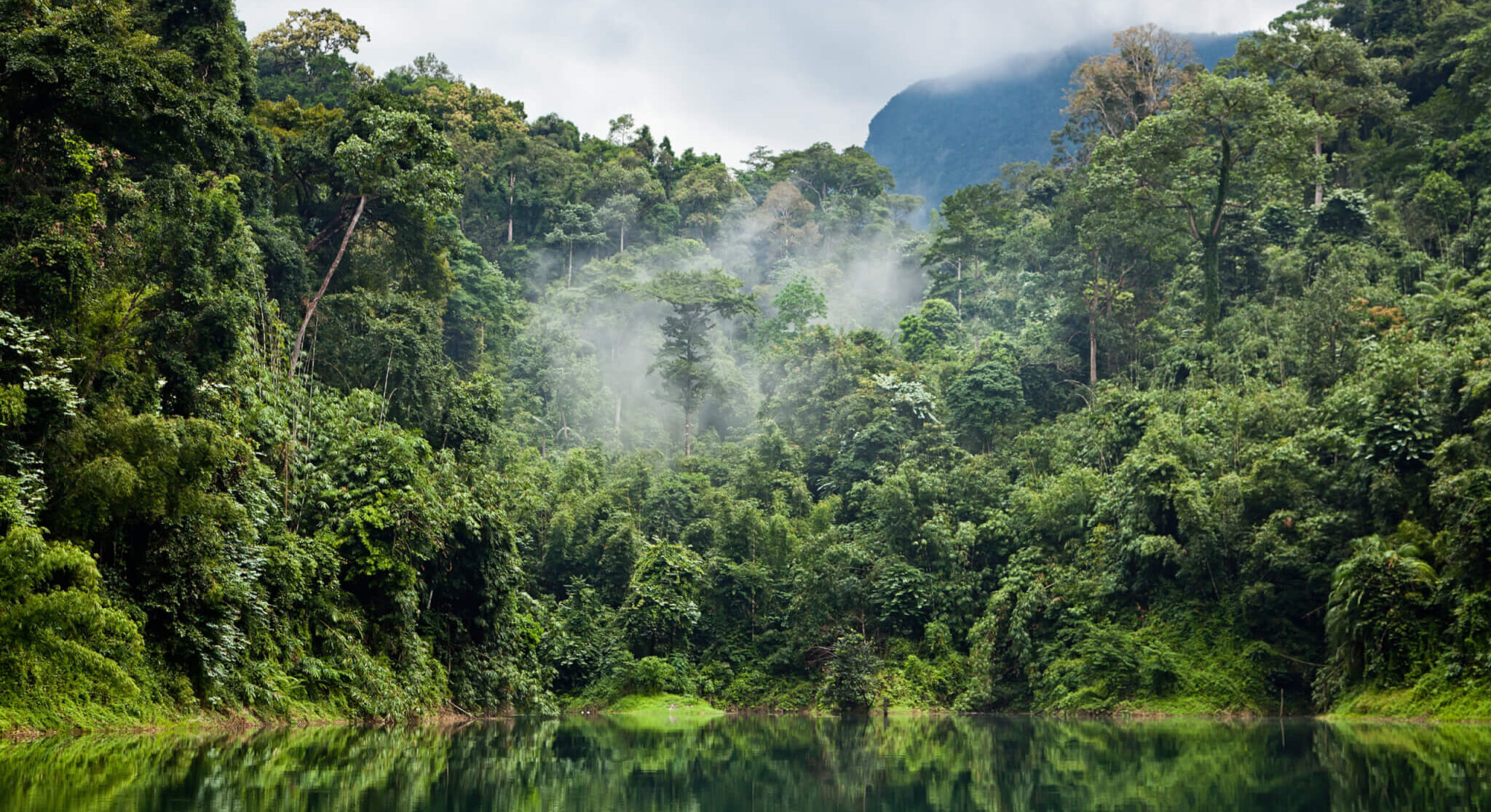
Key takeaways from the IGFA
The total potential for additional forest carbon storage outside of urban and agricultural lands is 226 Gt. This can only be achieved through complex, diverse forests, which capture over twice more carbon than monocultures. This can be achieved by protecting the rights of indigenous people, local communities, and farmers, who are the stewards of biodiversity across the globe.
Out of this forest carbon drawdown potential, 61% can be achieved by protecting existing forests and allowing them to regrow to maturity. The remaining 39% can be achieved by reconnecting fragmented landscapes through community-driven ecosystem restoration and management.
But this potential can only be realised and maximised alongside emission cuts, because ongoing emissions would only threaten forest carbon storage in the future. We need nature for climate action and we need climate action for nature.
Press Kit
Find material for journalists here. Please send queries to [email protected].
Frequently Asked Questions
Find more information and answers to our most frequently asked questions below.

